
Gaza City in World War I, 1917 (Library of Congress). What caused such destruction?
In the early 1900s, the British Empire relied on the Suez Canal to maintain communications and trade with India, Australia and New Zealand. And that was precisely why Germany encouraged Turkey to challenge British rule over Egypt and British control of the Suez Canal.

Turks prepare to attack the Suez Canal, 1915
In March and April 1917 the British army attempted to push through Gaza and up the Mediterranean coast in battles that involved as many as 60,000 soldiers, British and French ships firing on Gaza from the Mediterranean, the use of poison gas, and the deployment of newly developed British tanks. The British suffered a disastrous defeat.

Great Mosque of Gaza (circa 1880) 
The Mosque after the fighting (1917)

Ruins of Gaza, believed to be after the 1917 battles

British trenches in Gaza. After the defeat, the
British army switched to more mobile tactics.

British tanks destroyed in the Gaza fighting
The British campaign for Jerusalem would be stalled for six months. It would be led by a new commander, a large number of reinforcements, and a new strategy that took the war in a new direction, east toward Be'er Sheva.
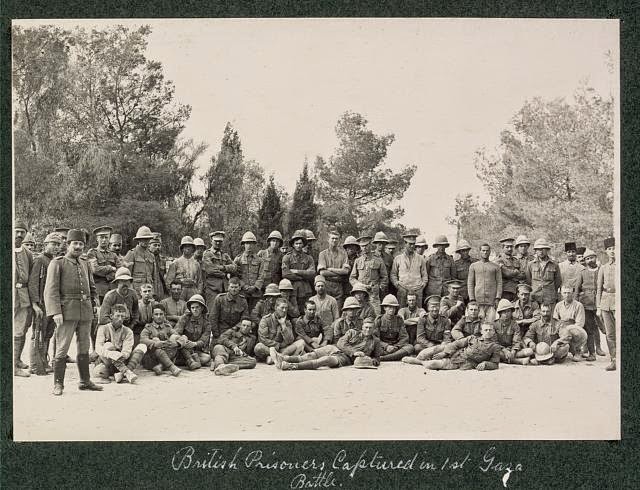
British Prisoners of War, captured in Gaza 1917
Footnote: History records Jews living in Gaza for thousands of years. [View the mosaic depicting King David from a 6th century synagogue in Gaza.]
Ottoman tax records showed dozens of Jewish families in Gaza in the Middle Ages. One of the most famous Gazan Jews was Rabbi Israel Ben Moses Najara (16th Century) who composed prayers and Sabbath zmirot (songs) popular to this day. He was buried in Gaza.
Mosaic of King David
(Israel Museum)
Jewish families fled Gaza in the 1929 pogroms. Population records still showed Jews living in Gaza until 1945.
Kfar Darom, named for a community mentioned in the Talmud, was a Jewish kibbutz established in the Gaza Strip in 1930 that was abandoned in the 1948 war. Kfar Darom was reestablished in 1970 but evacuated by Israel in the 2005 "disengagement."
28
Announcing a new feature: WW100 -- World War I and the Jews of Palestine, Commemorating the Centenary since the Outbreak of the War to End all Wars
We will present over the next year special features commemorating the centenary of World War I, showing the major battles that shook Palestine, the Jewish population of the Holy Land, and the Jewish soldiers who fought -- on both sides. Below are sample pictures:

Turks prepare to attack the Suez Canal

Austrian Jewish soldiers at the Kotel

Jewish students and teachers after the capture of Rishon LeZion by New Zealand soldiers 0
Add a comment
The Presbyterian Church Archives Research Centre holds a fascinating collection of 144 glass Lantern slides of various scenes from the Holy Land. The majority appear to have been taken in the latter years of the 19th century.
Tiberias and the Sea of Galilee (circa 1890, colored slide, Presbyterian
Research Centre, Presbyterian Church of Aotearoa New Zealand)
See Part I here.

The Tower of David's Citadel at Jaffa Gate, Jerusalem. The clock tower on the left was built
in 1908 and torn down in 1922, enabling the dating of the picture.
(Presbyterian Research Centre, Presbyterian Church of Aotearoa New Zealand)

Western Wall (1867, (Presbyterian Research Centre,
Presbyterian Church of Aotearoa New Zealand) and here
The picture of the Western Wall is from the Presbyterian Research Centre, but it also appeared in the Israel Daily Picture two years ago. It was taken byFrank Mason Good in 1866/67 and published by thePalestine Exploration Fund.
Note in both photos the single figure praying and the buckets (?) hanging on the wall.

Hebron and the Cave of the Patriarchs (circa 1890)

Jacob's Well, near Nablus (Shechem) and
Joseph's Tomb. (1868)
Click on photos to enlarge.
Click on captions to view the original photographs.
Mobile users: visit www.israeldailypicture.com
0
Add a comment

Women at the Western Wall (circa 1890, Presbyterian Research Centre,
Presbyterian Church of Aotearoa New Zealand)
Proving that responsible archivists and librarians digitize and preserve their photographic treasures is the collection of 19th century pictures of the Holy Land in the Presbyterian Research Centre in New Zealand. We present here a sample of the collection.

Rachel's Tomb, Bethlehem (Presbyterian Research
Centre, Presbyterian Church of Aotearoa New Zealand)
We thank Donald Cochrane, the former curator of the photographs and lantern slides, Myke Tymons the current curator, and Eva Garbutt, archivist at Knox who gave us permission to use their photographs.
The Research Centre's introduction provides some details on the collection:
The Presbyterian Church Archives Research Centre holds a fascinating collection of 144 glass Lantern slides of various scenes from the Holy Land. The majority appear to have been taken in the latter years of the 19th century. While undated, some do carry a manufacturers name or trademark which can act as a guide to dating. Those high quality slides produced by the Aberdeen firm of George Washington Wilson (marked "GWW"), were produced throughout the late 19th century. Mr Wilson, who died in 1893, received patronage from Queen Victoria and a Royal Warrant due to his obvious abilities. Many slide sets are also numbered which show a considerable number missing...
The New Zealand collection is remarkable for the
angles of some of the pictures -- such as the women at the Western Wall, above -- different from many of the other conventional "postcard" pictures taken at the time.
Elderly Jewish men in Jerusalem. The photo was hand-colored with
hues that never would have been worn by the poor, pious men.
(Presbyterian Research Centre, Presbyterian Church of Aotearoa)
Some of these photographs/slides were taken by Frank Mason Good in the 1860s.
Color film was not available until years later. The color slides were transparencies with color applied.
Kerosene "stereo" lanterns to
project slides onto a screen
In the 1880s, before movies or electricity, photographic slides such as these were projected in front of classes or audiences using a kerosene-lit lamp fitted with special lenses. The slides were often produced by optical manufacturers who sold the lanterns.

Lepers outside of the walls of Jerusalem. Note the Montefiore windmill
and Meshkenot Sha'ananim housing project behind them
(Presbyterian Research Centre, Presbyterian Church of Aotearoa New Zealand)

Sea of Galilee (Presbyterian Research
Centre, Presbyterian Church of Aotearoa New Zealand)

Damascus Gate of Jerusalem's Old City
View our other lantern slide collections from Chatham University, theChurch of Ireland, the Library of Congress, Oregon State University, and the George Eastman collection.
With special thanks to David Bardin1
View comments
Jihadi forces overran Mosul, Iraq's second largest city, this week. Analysts explain Mosul's significance as the center of Iraq's oil-rich areas, the gateway for the Sunni radicals to attack Baghdad, and a debacle for the U.S.-supported Iraqi army.
Jews of Mosul (Credit: Keystone-Mast Collection,
California Museum of Photography at UCR)
But Mosul also has an ancient history. It was the Biblical city of Nineveh, so large that the Book of Jonah describes it as a "great city of three days
journey in breadth."
"Jewish Cobblers Repairing Shoes for Arabs, near
Mosul, Mesopotamia" (Iraq) (Credit: Keystone-Mast Collection,
California Museum of Photography at UCR ARTSblock, University of
California, Riverside)
The Assyrian King Sennacherib built a massive palace there on the banks of the Tigris River.
We present pictures of Mosul 80 years ago and of Jews of Mosul approximately 100 years ago.
Read here a 2007 account of a Jewish chaplain from the US Army's 101st Airborne who discovered the remnants of Mosul's Jewish community.

Mosul, Iraq, 1932 (Library of Congress)

Mosul and the Tigris in the background, 1932 (Library of Congress)

Sennacherib's castle, Mosul, Iraq, 1932 (Library of Congress) See also here 0
Add a comment
5
The First "American Colony" Was Established in the Holy Land 150 Years Ago. Help Us Find It in Photographs
We are proud that the photographs presented here are all "kosher." They usually have lapsed copyright restrictions, but, in any case, we seek and obtain permission from the relevant collections, archives and libraries. All pictures are presented with the links to the original source, and we find librarians and archivists thankful for our site driving readers to their material.The American "Colony" in the 1860s. Please help us obtain
such pictures in high-resolution digitized form
On occasion, however, we have skipped certain collections because of requests for payment.
We believe that pictures of Americans attempting to establish a colony near Jaffa in the 1860s are worthy of an entry in these pages.
Photograph of the colony founder, George
Jones Adams, c. 1841
(Our research found that Mark Twain met some of the members of the failed colony and wrote about them.)
Unfortunately, the photographs can only be obtained in digitized high-resolution with payment. In one case, a small American museum contains documents and photographs, and images must be purchased. In the case of the Library of Congress, which has been amazingly cooperative in releasing their photographs, the photograph described below has never been digitized.
Title: The American Settlement, near Joppa, Palestine. Erected by the Adams Colony from Maine and New Hampshire, 1866-7
- Date Created/Published: [1866 or 1867]
- Medium: 1 photographic print.
- Summary: Photograph shows buildings of the "American Colony" or "Adams City" near Jaffa, now Tel Aviv, Israel which was founded by George Jones Adams (ca. 1811-1880) in 1866.
"And it shall be when you come into the land which the Lord your God gives you for an inheritance and you possess it and dwell therein. You shall take the first of all the fruit of the ground from the land that the Lord your God gives you, and you shall put it in a basket and you shall go to the place which the Lord your God shall choose to dwell in." [Deuteronomy XXVI:1-2]Shavuot celebration in Tel Aviv (1935, Israel
Government Press Office, HT: Gina)
During the days of the Temple in Jerusalem Jews were commanded to bring their first fruits to the sanctuary during the Shavuot (Pentecost) pilgrimage festival. It was a joyous thanksgiving holiday.
Poster for Shavuot (1940, Israel
Government Press Office)Children's procession in Kibbutz Ein Harod (1938,
Israel Government Press Office)

A Shavuot gathering? Original caption: The Keren Hayesod. Agricultural Colonies on Plain of Esdraelon
"The Emek [Jezre'el]." Zionist children at play. A spring group. Children picking wild flowers [Library of
Congress, circa 1920-1933]
In the early 20th century, the collective Kibbutz and Moshav agricultural movements adopted the holiday to exhibit their produce and farm equipment. The new "tradition" continues to this day.
Reader Josh Korn of Canada provided us with this picture and a request:

Kibbutz Naan, Shavuot 1932 (Courtesy Josh Korn)
This photo is from Kibbutz Naan, dated from Shavuot 1932.
I know only one of the people in the photo: the guy wearing glasses on the left is my dad. I'd love to find out who the others are.0
Add a comment
Please click on the Paypal "Donate" button on the top right of our website, www.israeldailypicture.com, to assist us in purchasing these historic, high-resolution digitized images. (We are not purchasing the originals, just digitized copies.)
3
View comments
-

עומדות, היו רגלינו בשערייך, ירושליםירושלים הבנויה כעיר שחוברה-לה יחדיוOur feet did stand firm within your gates, O JerusalemJerusalem, built up, is like a city that is united- Psalms 122
Israel celebrates "Jerusalem Day" today, commemorating the reuniting of the city of Jerusalem during the 1967 war. For 19 years, between 1948 and 1967, the city was split between warring Jordanian and Israeli forces.
Thousands of Israelis will visit Jerusalem today, dance to the Western Wall, and march around the Old City's gates. We present here antique pictures of the gates, some taken 160 years ago.
Click on the photos to enlarge, click on the caption to read more about each gate.
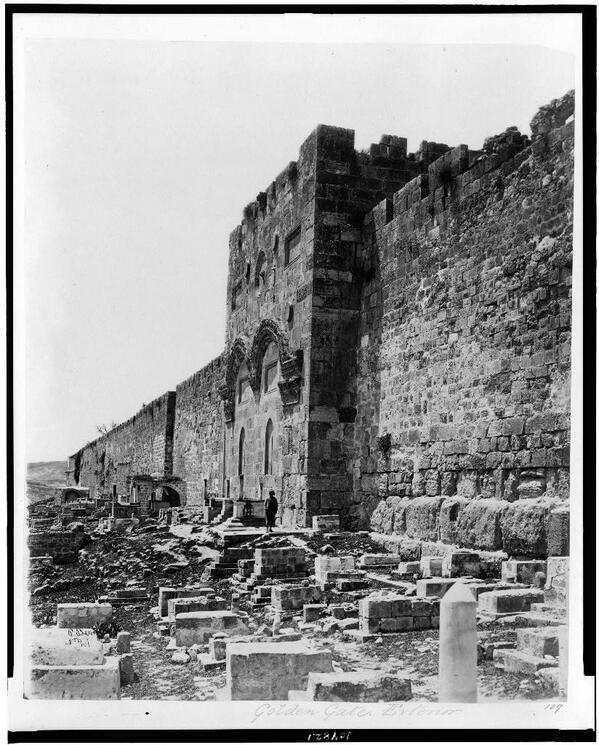
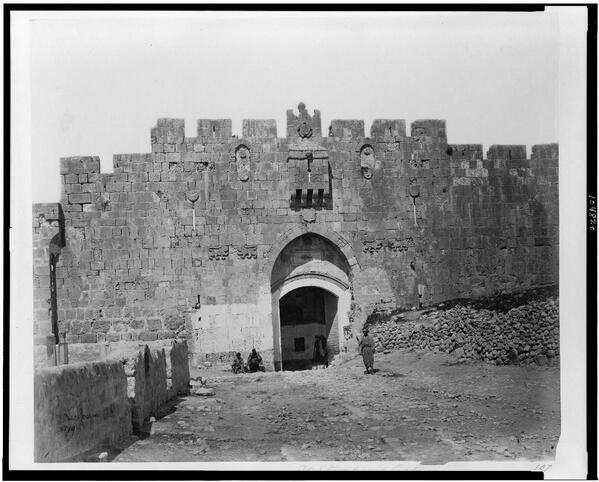

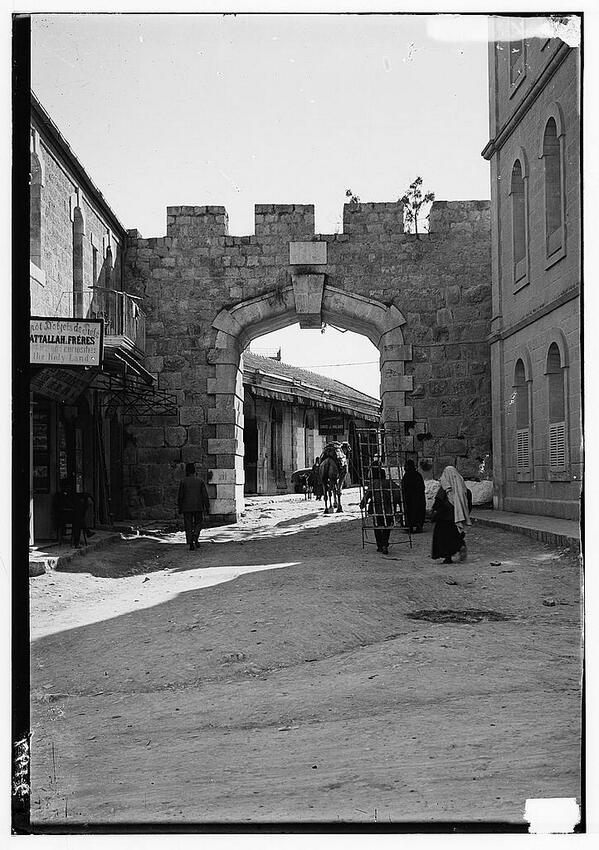
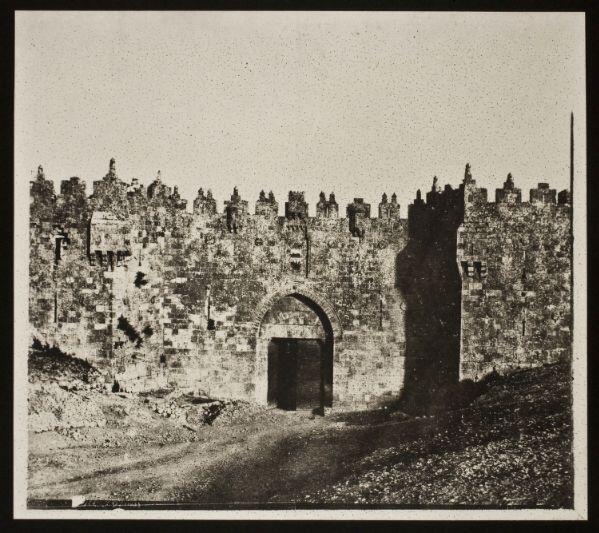
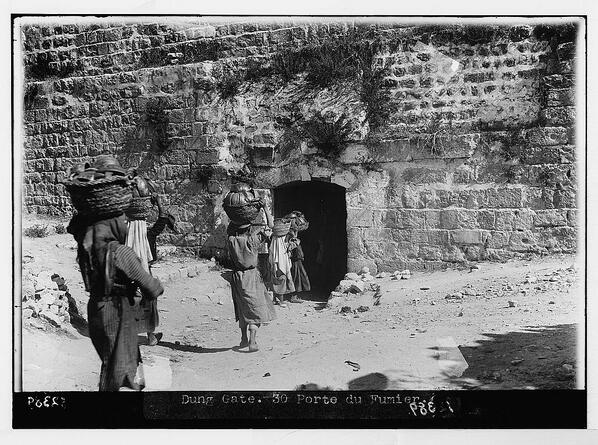
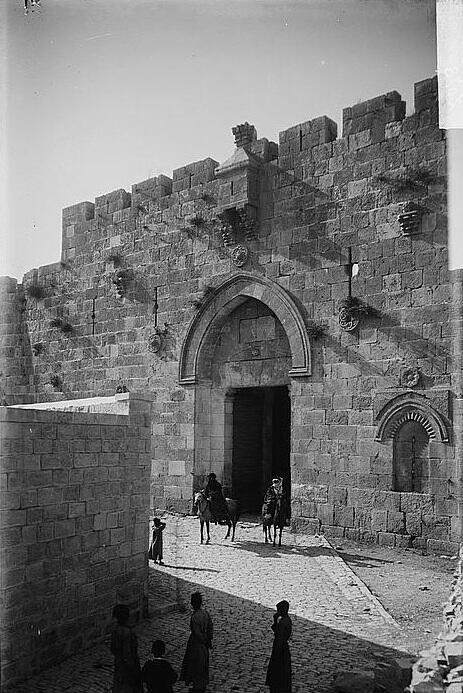
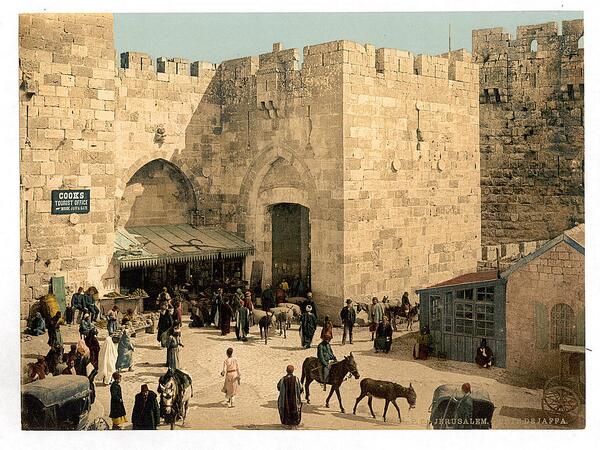
Jaffa Gate (hand colored)1View comments
- MAY26
Chapter: Jewish holidays: Israel Commemorates "Jerusalem Day," Celebrating the Unification of Jerusalem in 1967
David Rubinger's iconic 1967 picture of Israeli paratroopers at the Western Wall is one of the most famous pictures in modern Jewish history.Paratroopers at the Western Wall, 1967
(Israel Government Press Office)
The photo was taken just hours after the Israel Defense Forces captured Jerusalem's Old City during the Six-Day War after the Jordanian army fired on the Jewish half of the city.
Israel Daily Picture has discovered that the Western Wall has been a magnet for Jewish soldiers over the last century.
We present these pictures for "Yom Yerushalayim" which begins Tuesday evening.
Austrian Jewish soldiers at the Western Wall. The Austrian and German armies were allied with
the Turkish army during World War I, 1915 (Harvard Library/Central Zionist Archives). The
photographer, Ya'akov Ben-Dov, moved to Palestine from Kiev in 1907. He was drafted into
the Ottoman army during World War I and served as a photographer in Jerusalem
Jewish soldiers from the British Army after the capture of Jerusalem in December 1917 (Wikipedia) 
Two British soldiers, presumably Jewish, at the Western Wall during a
major snow storm in 1921 (Library of Congress)0Add a comment
- MAY21
Chapter: World War I: Did a German Officer Prevent the Massacre of the Jews of Eretz Yisrael during World War I?And Later His Son-In-Law Conspired to Kill Hitler

German General Falkenhayn on the Temple Mt with Jamal
Pasha, Turkish governor of Syria and Palestine, 1916
(Library of Congress collection)
This 2011 posting was one of our most popular features. It is presented here with updates. A version of this article was published in The Jerusalem Post Magazine on December 9, 2011.
The Ottoman war effort in Palestine in World War I was led by German officers, and their involvement was recorded by the American Colony photographers. German General Erich von Falkenhayn, an able Prussian officer who served as the Chief of Staff of the German Army, was the commander of the Turkish and German troops during the critical 1917-1918 period.
A German photographic collection contains a picture of Falkenhayn leaving Palestine in 1918 and bears an amazing caption which claims that Falkenhayn prevented a Turkish massacre of the Jews of Palestine [Unfortunately, permission was not granted to use the photo, but it can be viewed here]:"Falkenhayn and the German Staff need to be credited with have [sic] prevented an Ottoman genocide towards Christians and Jews in Palestine similar to the Armenian suffering. Wikipedia: 'His positive legacy is his conduct during the war in Palestine in 1917. As his biographer Afflerbach claims, "An inhuman excess against the Jews in Palestine was only prevented by Falkenhayn's conduct, which against the background of the German history of the 20th century has a special meaning, and one that distinguishes Falkenhayn."'" (1994, 485)
Is it true? Did a German general protect the Jewish population of Palestine from massacre?
General Erich Von
Falkenhayn (Bundesarchiv)
A Falkenhayn family genealogy, posted on the Internet, elaborates further: "While he was in command in Palestine, he was able to prevent Turkish plans to evict all Jews from Palestine, especially Jerusalem. As this was meant to occur along the lines of the genocide of the Armenians, it is fair to say that Falkenhayn prevented the eradication of Jewish settlements in Palestine."
Again, is this true, or is this self-serving German testimony to scrub the stain of Nazism two decades later?

Falkenhayn and Jamal Pasha in the backseat of a car
in Jerusalem (The New Zealanders in Sinai
and Palestine, 1922)
The German general is pictured here in a car with the Turkish ruler of Syria and Palestine, Jamal (also written as Cemal) Pasha, a ruthless ruler and one of the "Young Turks" leadership accused of carrying out the expulsion and massacre of hundreds of thousands of Armenians across the Ottoman-controlled region during World War I.

Two of the "Young Turks" - Enver Pasha (center)
and Jamal Pasha (right). 1916. Were they responsible for
the Armenian massacre? What were they
planning for the Jews?
Another leader was Enver Pasha who led the Ottoman Empire during World War I and on occasion visited Palestine where he was photographed with Jamal on the Temple Mount and in Be'er Sheva.
Jamal Pasha suspected the loyalties of the Jews of Palestine. The explosion of nationalistic movements across the Empire was eroding Turkish control, and Arab and Jewish nationalism had to be crushed.
Zionists were particularly suspected of leading opposition to Ottoman rule, and leaders -- such as David Ben-Gurion -- were arrested, harassed or exiled. Many were relative newcomers from Russia, an enemy state. Meanwhile, over the horizon, 1,000 Jewish volunteers for the British army, including some from Palestine, formed the Zion Mule Corps in 1915, later known as the Jewish Legion, and they fought with valor against the Turks at Gallipoli.

The two Pashas ride into Be'er Sheva where the British
army later broke through and continued to Jerusalem
Sarah Aaronsohn, NILI founder
The Jews of Palestinefeared that after the Armenians, the Jews would be next. The fear motivated some to form the NILI spy network to assist the British war effort.
Eitan Belkind, who infiltrated the Turkish army and served on Jamal Pasha's staff, witnessed the killing of 5,000 Armenians. Later his brother was hung by the Turks as a NILI spy. Sarah Aaronsohn of Zichron Ya'akov was traveling by train and wagon from Turkey to Palestine in November 1915. On the way she witnessed atrocities committed against Armenians.
In 1916 she joined her brother Aharon Aaronsohn, a well-known agronomist, in forming the NILI spy ring. Caught by the Turks in October 1917 in Zichron Ya'akov and tortured, Sarah committed suicide before surrendering information.
At the time, the British were moving north out of Sinai and pressing along the Gaza-Be'er Sheva front.
Sarah's brother Aharon wrote in his memoirs, "The Turkish order to confiscate our weapons was a bad sign. Similar measures were taken before the massacre of the Armenians, and we feared that our people would meet the same kind of fate."
One Zionist activist described the cruelty of the Jaffa Commandant, Hassan Bey, already in 1914:
"Tyrant" Hassan Bey "It would suddenly come into his head to summon respectable householders to him after midnight...with an order to bring him some object from their homes which had caught his fancy. Groundless arrests, insults, tortures, bastinadoes [clubs] -- these were things every householder had to fear."
The most egregious act undertaken by the Turks was the sudden expulsion of the Jews of Jaffa-Tel Aviv on Passover eve in April 1917. Between 5,000 and 10,000 Jews were expelled. The Yishuv in the Galilee and Jerusalem sheltered many of the Jewish refugees, but with foreign Jewish financial aid blocked by the Turks and the land suffering from a locust plague, many of the expelled Jews died of hunger and disease. By one account, 20 percent of Jaffa's population perished.
A German historian, Michael Hesemann, described the horrible situation:"Jamal Pasha, the Turkish Commander who was responsible for the Armenian genocide... threatened the Jewish-Zionist settlers. In Jaffa, more than 8,000 Jews were forced to leave their homes, which were sacked by the Turks. Two Jews were hanged in front of the town gate, dozens were found dead on the beach. In March, Reuters news agency reported a 'massive expulsion of Jews who could face a similar fate as the Armenians.'"
In 1921, a representative from Palestine reported to the 12th Zionist Congress on "Palestine during the War."“In Jerusalem [apparently in 1917] …dozens of children lay starving in the streets without anyone noticing them. Typhus and cholera carried off hundreds every week, and yet no proper medical aid was organized. … Through this lack of organization a considerable portion of the Jerusalem population perished. The number of orphans at the time of the capture of Jerusalem by the English Army was 2,700. “ He continued, “In Safed conditions were similar to what they were in Jerusalem; if anything, worse.… The death-rate here also was appallingly high; towards the end of the war the number of orphans was 500.”
What saved the Jewish community before the British completed their capture of Palestine in late 1917 and 1918?
Several accounts confirm that German officers and diplomats protected the Jews.

Col. Kress van Kressenstein
The Zionist Congress report credited foreign consular officials who "during the whole period of their stay in the country showed themselves always ready to help, and performed valuable services for the Jewish Yishuv [the Jewish community]. Especially deserving of mention are the German vice-consul Schabiner in Haifa... The Jewish population also benefited by the presence of the head of the German military mission, Colonel Kress van Kressenstein, who on several occasions exerted his influence on behalf of the Jews."
Falkenhayn's biographer, Prof. Holger Afflerbach of Leeds University explained, "Falkenhayn had to supervise Turkish measures against Jewish settlers who were accused of high treason and collaboration with the English. He prevented harsh Turkish measures -- Jamal Pasha was speaking about evacuation of all Jewish settlers in Palestine."

Kressenstein reviewing troops with Jamal Pasha
The professor continued, "The parallels to the beginning of the Armenian genocide are obvious and striking: It started with Turkish accusations of Armenian collaboration with the Russians, and the Ottomans decided to transport all Armenians away from the border to another part of the Empire. This ended in death and annihilation of the Armenians. Given the fact that Palestine was frontline in late 1917, something very similar could have happened there to the Jewish settlers."
"Falkenhayn's role was crucial, " Afflerbach explained. "His judgment in November 1917 was as follows: He said that there were single cases of cooperation between the English and a few Jewish radicals, but that it would be unfair to punish entire Jewish communities who had nothing to do with that. Therefore nothing happened to the Jewish settlements. Only Jaffa had been evacuated -- by Jamal Pasha."
Hesemann, the German historian, cites Dr. Jacob Thon, head of the Zionist Office in Jerusalem, who wrote in 1917, "It was special stroke of good fortune that in the last critical days General von Falkenhayn had the command. Jamal Pasha in this case -- as he announced often enough -- would have expelled the whole population and turned the country into ruins...."
[Hesemann has written extensively about the Vatican's role in aiding the Jews of Palestine: "Eugenio Pacelli, who in 1939 became Pope Pius XII, actively supported Zionism during World War I, German historian Michael Hesemann claims in his book “The Pope Who Defied Hitler. The Truth About Pius XII.” Hesemann, who is one of the few historians with access to the Vatican Secret Archives, states he found evidence that Pacelli in 1917 as Apostolic Nuntius in Munich, successfully intervened in favour of the Jewish settlers in Palestine."]
Falkenhayn, his daughter Erika, and Jamal Pasha at the Jerusalem train station, 1917. In 1926, Erika married a
young German officer, Henning von Tresckow, who rose through the ranks. A general in 1944, he was involved
in an attempted coup against Adolf Hitler. He committed suicide in June 1944. Erika and her children were arrested.
Falkenhayn had no particular love for Jews, according to his biographer, Afflerbach. "He was in many aspects a typical Wilhelmine officer and not even free from some prejudices against Jews, but what counts is that he saved thousands of Jewish lives."
Erika von Falkenhayn and her
husband Henning von Tresckow
(Wikipedia)
Why has no one heard about Falkenhayn and his role in protecting the Jews of Palestine? Afflerbach responded, "The action was forgotten, because Falkenhayn prevented Ottoman actions which could have resulted in genocide... The incident was not discussed for decades. It restarted only in the 1960s when scholars started to remember it."
Perhaps Falkenhayn was also erased from German history for many years because of his son-in-law's Valkyrie conspiracy against Hitler.
Post Script: Falkenhayn Saved Jerusalem
Turkish sources indicate considerable tension between Jamal Pasha and Falkenhayn. The following account appears in the English-languageTurkey in the First World War:
Turkish troops evacuate Jerusalem
"The British attack on Jerusalem began on 8 December. The city was defended by the XX Corps, commanded by Ali Fuad Pasha. Falkenhayn did not send reinforcements to Jerusalem because he did not want the relics and the holy places damaged because of severe fighting. [emphasis added.]"
"After withdrawing from Jerusalem, Ali Fuad Pasha sent a cable to Jamal Pasha: "Since my first day as the commander of the defense of Jerusalem, I did not receive any support except one single cavalry regiment.... The British, who benefited from the fatigue of my poor soldiers..., invaded the beautiful town of Jerusalem. I believe that the responsibility of this disaster belongs completely to Falkenhayn!"
"Falkenhayn put the blame on Von Kressenstein and his chief of staff...Dissatisfaction with the advice and command of General Falkenhayn was growing. His inability had resulted in the loss of the Gaza-Beersheba line. His refusal to send reinforcements had resulted in the loss of Jerusalem.... Enver Pasha was losing patience too. On 24 February 1918, he replaced Falkenhayn."Irony of ironies. The Jews of Palestine owed their survival during World War I to a German army officer, and, by extension, the State of Israel's foundations were established thanks to Falkenhayn. Some 25 years later the German army would take part in the eradication of the Jews of Europe. Ultimately, survivors of the Nazi genocide would find shelter in Falkenhayn’s legacy.
























Add a comment